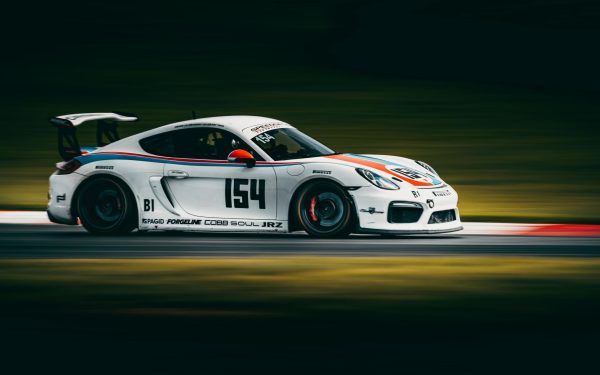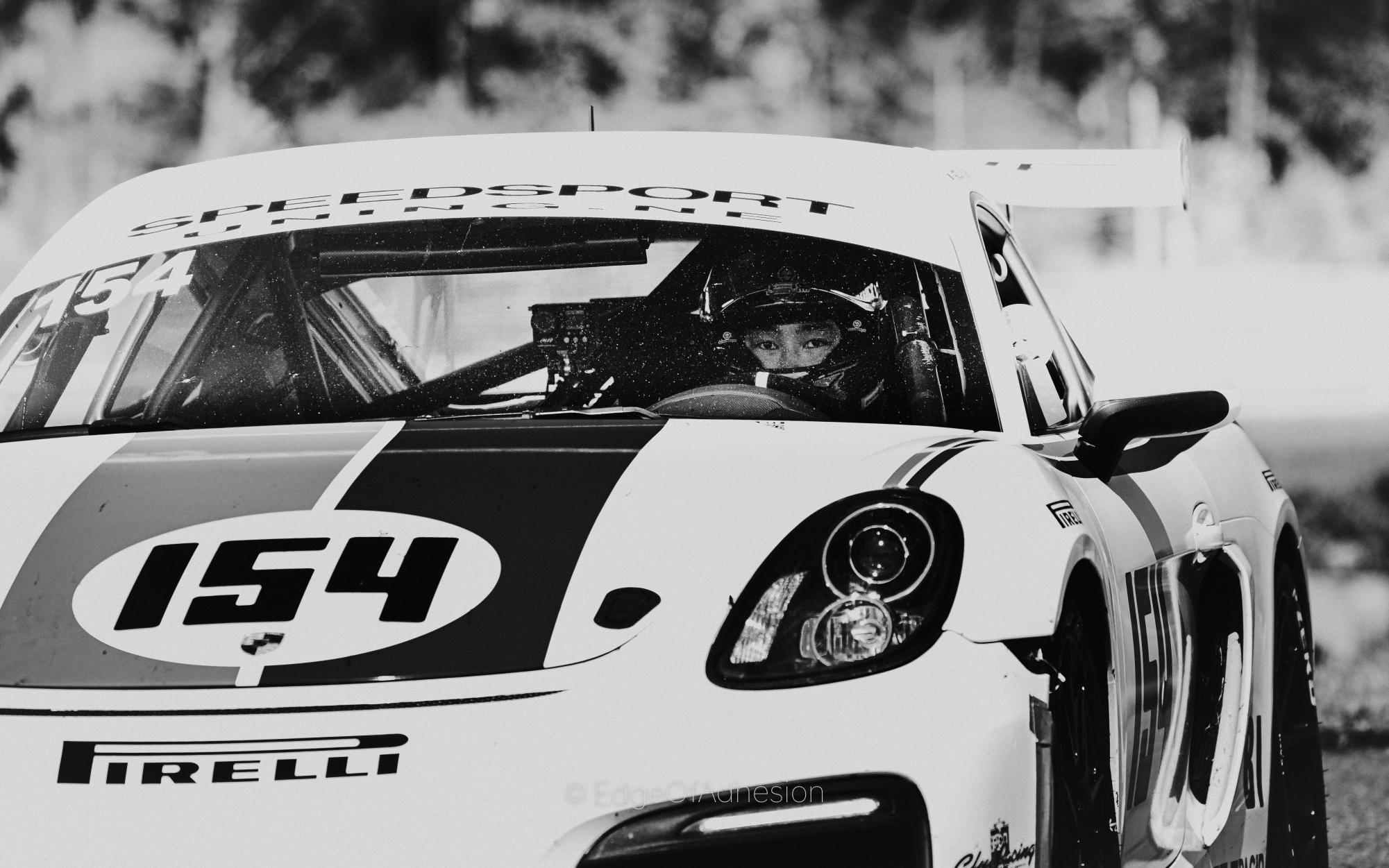Hugging the track with precision, the white Porsche Cayman whirs in the wind. Red and blue stripes decorate its exterior, blurring as Eric Liu (‘06) pushes the car to its limit, over 150 mph. He grips the wheel, feeling the vibration through his gloves as he carves around the corner. In this high-speed blend of an athlete and his car, Liu finds his element.
Liu’s journey to racing started with his childhood love for cars. Though at Harker, he drove a minivan to the upper school campus each day, he hoped to own a fast, high-performance car in the future. After graduating from college and moving to New York, Liu purchased his dream car: a Porsche Cayman.
Five years later, Liu pulled in next to a Shelby Cobra in a New York City parking garage. The owner of this car, a fellow automobile enthusiast, invited Liu to try racing on the track. This serendipitous meeting led Liu to attend his first practice.
“My first time at a track day was so cool because it was completely unlimited, and I felt like I finally had an outlet,” Liu said. “I did one track day first, and then I did another one, then five, and then ten. It just took on a life of its own from there.”
Since then, Liu has competed in multiple events at the club level, like sprint and endurance races from March to November. In the off-season, he works with his racing teams to practice his technical driving skills.
“Racing is just like any other sport in that to succeed and do well, it’s about having the right form,” Liu said. “It’s about being well practiced. There are also a lot of details about doing well in this sport that are very relatable to work and outside relationships.”
After practicing on track days, Liu began earning high positions at races and gained more comfort in competing in his Porsche Cayman. He now competes in the Porsche Club of America GTB1 racing class, the best of the club.

While in higher levels of racing like Formula 1, drivers rely on a large team of specialists, Liu competes at the club level and has to take on multiple roles. He’s not only the driver but also his own setup engineer, which requires him to gain a deeper understanding of the car’s mechanics.
“The car you’re in has a large effect on performance,” Liu said. “Cars are a very complicated instrument — there’s physics involved in how the dampeners or sway bars are set up. So I learned how to set up the car as good as it can be and improve myself as a driver to make the whole package more efficient.”
During track days and races, Liu uses a data logging system and spreadsheets to quantify changes he makes to his car and driving, like speed and time.
Close friend and racing teammate Artemus Tsang highlighted how this methodical approach and dedication to numbers allow Liu to stand out among competitors.
“He took learning how to drive very seriously,” Tsang said. “Eric was the first person I met who had data logging inside the car. No matter how good and successful he was, he would always still do the data logging. His strength is that he’s always hungry to get even better.”
Because of the high cost of racing, a minimum of a thousand dollars per event, Liu had to first find a means of financial stability through the tutoring company he founded after college. But now, the hours logged on the racetrack have also strengthened his role as a teacher. Each practice session reminds him of how it feels to be on the receiving side of the teaching process.
“Because I work in education, I’m a big believer in the learning process and getting help from somebody who already has the knowledge,” Liu said. “I also believe that you can cross-pollinate your experiences. When I’m teaching, it can sometimes be a challenge to stay in touch with what it’s like to learn. But being a student again helped me connect with their experiences, so I can facilitate their learning in the best way.”
Once he started racing, he approached each practice the same way he approached learning in school: beginning with the basics and improving every day. Tsang praised Liu’s willingness to learn, citing his open-minded nature as a source of his success.
“He approaches life, including racing, like a student,” Tsang said. “That’s what makes him so good on the racetrack because he was able to grow very rapidly as a driver. He’s able to put himself in the student role and ask all the right questions and then transition into the educator role to help other racers.”
Beyond the race car, Liu treasures the relationships he has built through the sport, especially through endurance racing. Each event lasts around nine hours, and drivers rotate and work together to maintain the car’s performance. In contrast to the competitive nature of the usual sprint racing, Liu appreciates the endurance races for their focus on collaboration. Competing with other drivers in this event has introduced him to people from across the country who share his passion for racing.
“My favorite part of racing is the people that I’ve met along the way,” Liu said. “There are a lot of people who run in very different circles that I never would have met, if not for racing. But we realized we have similar interests and goals, and we experience adversity and overcome it together. They’ve now become my lifelong friends.”
In the driver’s seat, Liu is constantly reminded of how far he has come. Racing fulfills his lifelong dream, an opportunity that he never takes for granted. Grateful for all the track days, friends and moments gained behind the wheel, Liu hopes to continue pursuing the sport he loves for many years to come.
“The fact that I get to do this at all, I have to pinch myself many times,” Liu said. “Getting to race makes me think of how lucky I am, so I always take everything with a grain of salt. I’m not too worried about what the outcome is. I just enjoy it for what it is.”


